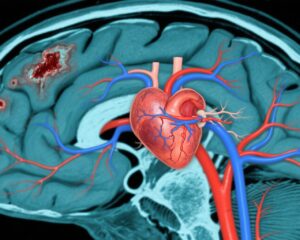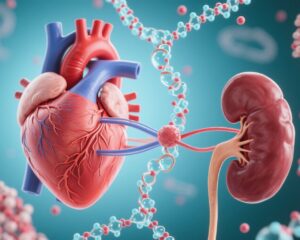Introduction
Heart failure with preserved ejection fraction (HFpEF) is a prevalent condition characterized by a failure of the heart to pump effectively while maintaining normal ejection fraction levels. One component that has been identified as crucial in the functioning of the heart during this condition is the left atrial (LA) function. Dysfunction of the left atrium is notably common among HFpEF patients, affecting their prognosis and quality of life. Recent research has focused on understanding and quantifying the mechanical performance of the LA through a new measure known as the Left Atrial Volumetric/Mechanical Coupling Index (LACI). This index helps reflect the atrial contractile function using the Frank-Starling mechanism inherent to the heart’s physiology.
Background
The LA volume index is calculated as the size of the LA compared to body surface area, while the late diastolic mitral annular velocity (a’) corresponds to the speed of the heart’s mitral valve closure during diastole. The LACI is derived from these two values, highlighting how effectively the LA can contract in relation to its volume. An elevated LACI suggests that the LA is unable to perform mechanically, despite an increase in volume, indicating a disengagement of volumetric and mechanical performance. However, the implications of the LACI on clinical outcomes in patients with HFpEF have not been thoroughly investigated before this study.
Methods
In this study, the data from 562 patients enrolled in the PURSUIT-HFpEF registry was utilized. The registry is a large-scale multicentric observational study specifically focusing on patients diagnosed with heart failure and preserved ejection fraction. Each patient’s LACI was calculated and subsequently categorized into quartiles. The study analyzed the relationships between the LACI and various echocardiographic parameters, along with the predictive value of LACI for clinical outcomes such as hospitalization and mortality rates.
Results
The findings revealed an inverse correlation between the LA volume index and the late diastolic mitral annular velocity (r=-0.26; P<0.001), indicating a compromised atrial Frank-Starling mechanism in the studied population. The median LACI calculated was 6.44 with an interquartile range from 4.16 to 9.69. The patients identified with elevated LACI values showed a concerning clinical profile characterized by increased filling pressures and evident diastolic dysfunction. Over an average follow-up period of 40 months, it was noted that 171 patients either succumbed to cardiovascular death or were rehospitalized due to heart failure. Notably, the incidence of such events correlated positively with the quartiles of LACI (quartile 1 at 26.4%, quartile 2 at 39.0%, quartile 3 at 46.1%, and quartile 4 at 46.4%; p=0.001 via log-rank test). Importantly, in a multivariable analysis considering other risk factors, LACI retained its significance as a strong predictor of adverse cardiovascular outcomes (hazard ratio of 1.18 per quartile increase, with a 95% confidence interval of 1.00-1.38, P=0.045).
Conclusions
Observations from this study indicate that, for patients with HFpEF, mechanical function of the LA deteriorates as its size increases, which may signify intrinsic volumetric and mechanical uncoupling within this group. The LACI has the potential to become a critical clinical index for assessing risk stratification concerning cardiovascular mortality and rehospitalization due to heart failure in patients suffering from HFpEF. Future research should explore the full potential of LACI in guiding clinical decision-making and improving patient care strategies.
Registration
The study has been registered on the ClinicalTrials.gov platform, with the unique identifier UMIN000021831.
References
Okada M, Tanaka N, Iwakura K, Onishi T, Seo M, Yano M, Hayashi T, Nakagawa A, Nakagawa Y, Tamaki S, Yasumura Y, Yamada T, Sakamoto D, Hikoso S, Okada K, Nakatani D, Sotomi Y, Sakata Y; OCVC‐Heart Failure Investigators. Left Atrial Volumetric/Mechanical Coupling Index in Heart Failure With Preserved Ejection Fraction. J Am Heart Assoc. 2025 Aug 5;14(15):e040646. doi: 10.1161/JAHA.124.040646. Epub 2025 Jul 30. PMID: 40736082.


